The Miniature Tarpon of the Delaware River
American shad are the largest and strongest species in the herring family.
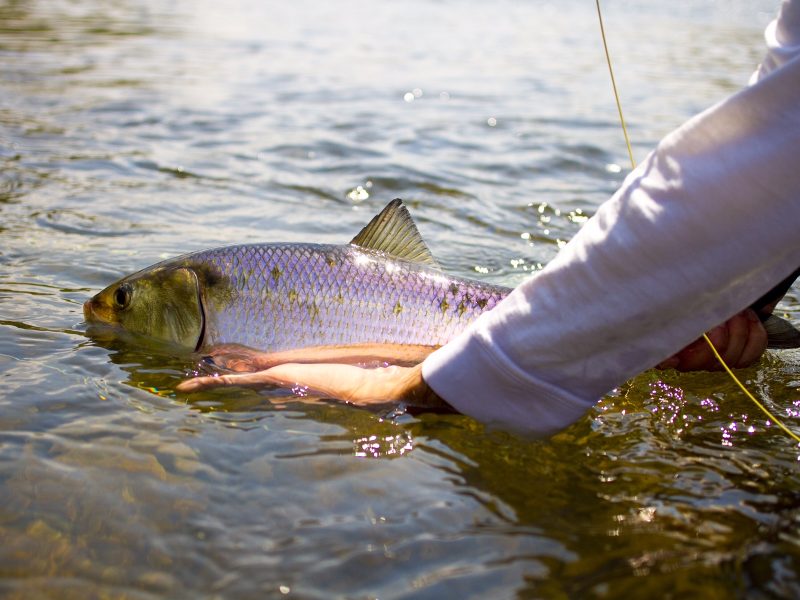
For most fly-fishermen, the first signs of spring on the Delaware River trigger visions of massive hatches and rising trout, but not for me. Although dry-fly fishing is always on my radar, my springtime excitement surrounds a fish that is often overlooked by fly-fishermen, a fish that enters the river from the ocean and puts up a spectacular battle on the fly rod. That fish is the American shad.
American shad are the largest and strongest species in the herring family. They begin their spawning run up the Delaware River in late March, migrating up to the headwaters to drop their eggs. Most shad die after spawning, the long journey requiring every bit of their strength.
American shad don’t feed after entering freshwater, but they will strike out of aggression. Water temperature plays a major role when targeting shad. The fish won’t strike until the water temperature reaches the high 40s, with the prime temperatures being between 53 and 58 degrees.
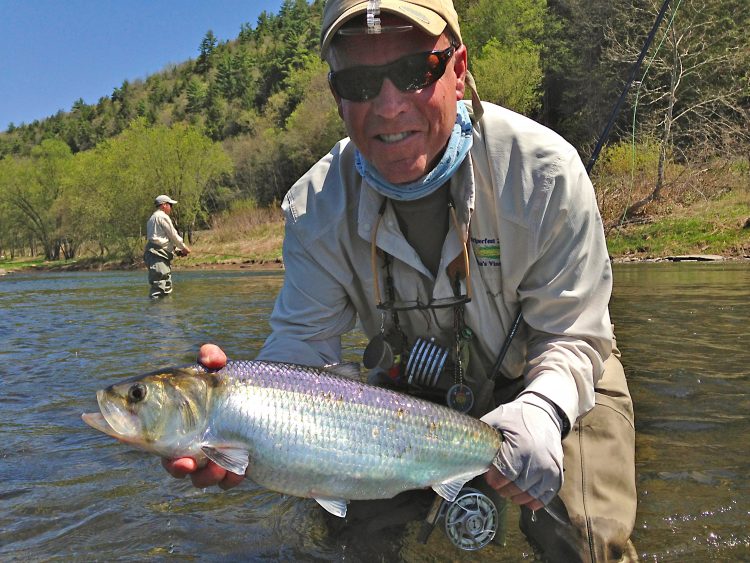
Delaware River shad average between 2 and 4 pounds, with the males, called “bucks,” weighing less than the females or “roes.” Every year, a number of big roe shad, weighing between 6 and 10 pounds, are caught.
Though shad run up both the east and west branches of the Delaware, I concentrate my efforts on the lower sections of the main stem because the shad there are fresh and full of life, and will give you everything they’ve got until you land them—if you land them. In addition to its strength, the American shad has a paper-thin mouth that requires you to play these hardfighting fish with a soft touch. Too much pressure will result in a lost fish.
There are many different ways to target Delaware River shad—from shore or from a boat, trolling or casting—but for me, catching them on the fly rod is the most fun.
I am a flats guide throughout most of the saltwater season, and carry that love of sight-fishing over to the Delaware River shad run. When river conditions are right, it’s possible to sight-cast to big American shad. For this to happen, the water must be low and clear, not only so I can spot the fish, but for the fish to concentrate in the river’s pockets and channels. Although sight-fishing is off the table when the water is high, the fishing is still fun, but I switch to swinging flies, which leads to some explosive takes.
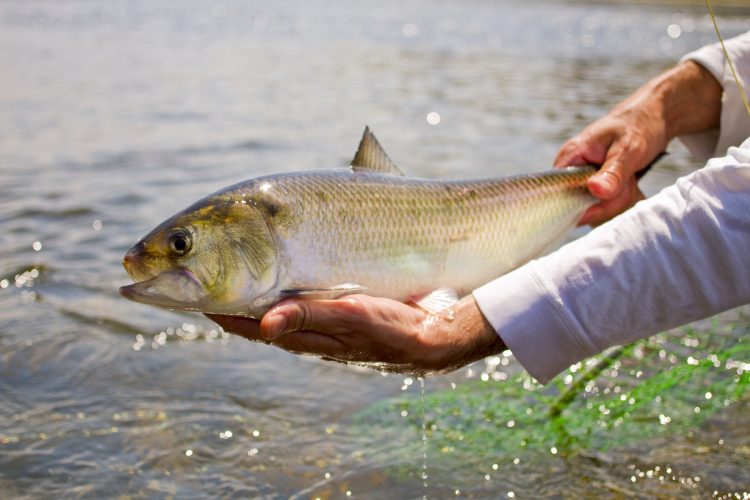
The takes can be furious as the shad eats the fly and barrels downriver, leaping clear out of the water like a miniature tarpon. It’s fascinating to watch shad track and strike the flies, which should be presented high in the water column and drifted right past their noses. It’s very rare for a shad to dip down to take a fly, so getting the right drift is a big part of the puzzle. When it comes to fly selection, I stick with smaller chartreuse patterns in sizes 4 to 6, but any brightly colored fly should do the trick. Most shad flies are made with marabou because the fluttering of this material really gets a shad’s attention. I carry a number of different weights for different depths. Many anglers speculate as to the best time of day to target shad. American shad have big eyes and good vision in low-light conditions, so cloudy days and sunrise or sunset can produce big catches. That said, some of my best fishing has taken place in the middle of the day with a bright sun directly overhead, so I’m not sold on low light being the best time to target shad. More important than the light or time of day is finding where the shad are holding and where they are moving up-river. Shad can cover 4 to 8 river miles in a day, so finding a good body of fish can be challenging. They will rest and regain energy before running through a heavy riffle, so that’s always a good starting point to find them. Shad travel in pods, typically 6 to 12 in a pack, sometimes many more. If you come across a fish holding in an area, sit tight—there will be more to come.
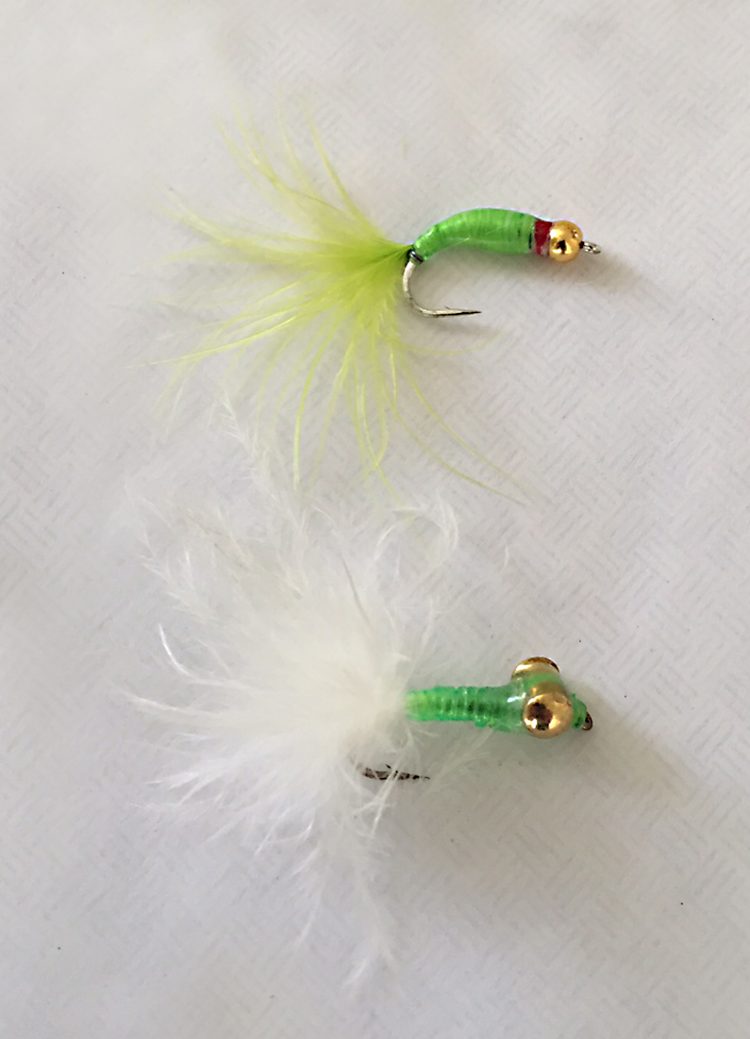
I use a 5-weight rod and floating line for targeting shad, and most fish take me into my backing. You can get away with a 4-weight, if the water is super low, but you’ll have your work cut out for you if you happen to hook a 6-plus-pounder. Last season, a client of mine was spooled on a 4-weight after hooking into a monster shad that took him into the fast water! He didn’t have the backbone to stop the fish and wasn’t able to run it down. When the water is high, swinging flies on a 5/6- or 6/7-weight switch rod and a slow-sinking line is a blast. It’s right up there with swinging for steelhead. It’s also a great way to cover water and different depths through a long, slow run.
My father started taking me to the Delaware River when I was 7 years old. We’d stay in a small hunting cabin in Pennsylvania that I now pack with shad-fishing clients before the saltwater season kicks off. The Delaware River offers many different kinds fish to target throughout the year, including smallmouth, largemouth, trout, walleye, muskie, catfish, and the list keeps going. While these species can be caught in the river almost yearround, there’s only one month of the season to target the beautiful silversided migrants, the American shad. When you hook your first one on the fly rod, you’ll begin to realize just how special they are.
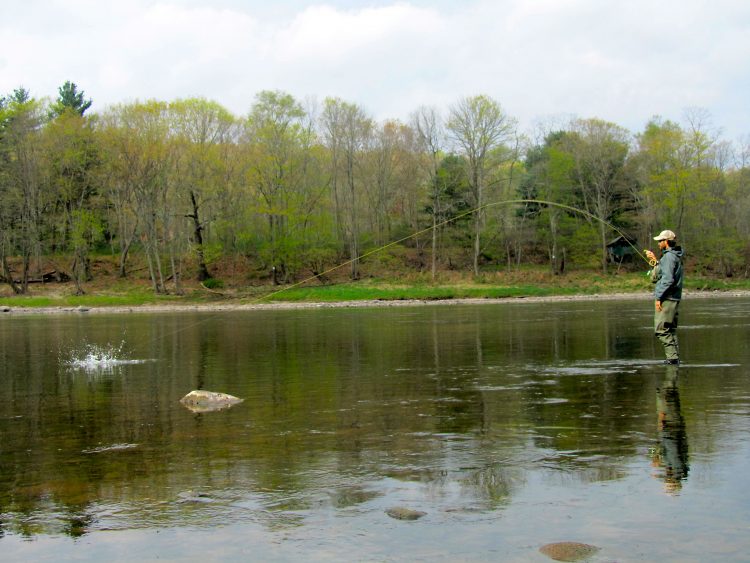
7 on “The Miniature Tarpon of the Delaware River”
-
Jonathan Williams I used to catch shad all the way up in Vermont, below the Bellow’s falls dam on the Connecticut river. Great fun, it’s worth the experience!
-
gil plate who is the better fighter and leaper shad or small mouth bass?
-
Randy Hileman i enjoyed your article.I fished the Delaware many times as a young man .but no longer live in the area The beauty and the wild life on the river is outstanding .
-
Manuel Hi, do you organize fishing trips? If yes where can I find scheduled trips?
Thanks-
Adam Try this Manuel: https://www.onthewater.com/find-a-charter-fishing-trip
-
-
Jacob D Vincent Caught my first shad in the Saco river in Maine this last summer trying to catch herring for bait. Oh boy I thought I had a striper on! These shad are excellent fighters wicked fun to catch!
-
Bob zelley Thank you for the informative article. I grew up on the river in lower bucks and shad fishing is reminds me of Easter for about when the river temperature reaches 50 degrees
Leave a Reply